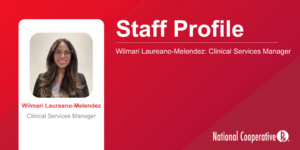“Coronavirus,” “COVID-19,” “pandemic.” These are the words that dominated the world in 2020, with Merriam-Webster even proclaiming “pandemic” its Word of the Year. With most of us wishing these words would disappear from daily conversation, it seems we may be inching closer to that reality, given the recent news about potential vaccines for COVID-19. Still, experts warn a vaccine will not end the pandemic by itself; preventive strategies and effective treatments will still be extremely important. The COVID-19 treatment pipeline is bursting at the seams, with news almost daily about clinical trials. Keep reading to discover highlights of some of the most promising treatments in late stage trials.
Antivirals
Veklury® (remdesivir):1 This is the first and only drug approved by the U.S. Food and Drug Administration (FDA) for the treatment of COVID-19 infection requiring hospitalization. In a clinical trial, 1,063 patients treated with intravenous remdesivir recovered five days sooner; the mortality rate in the remedesivir group was lower, though not statistically significant (11.4% with remdesivir versus 15.2% with placebo). The drug appears to work better for patients on low-flow oxygen, within 10 days of symptom onset. An analysis in this subgroup of patients did show a significant reduction in mortality (4% with remdesivir versus 13% with placebo). Interestingly, the World Health Organization (WHO) recently recommended against the use of remdesivir in hospitalized patients, citing lack of evidence for mortality benefit and reduction in need for mechanical ventilation (ventilator). The cost is $3,120 per five-day treatment course.
Monoclonal Antibodies
Casirivimab + imdevimab:1 This intravenous combination monoclonal antibody treatment received Emergency Use Authorization (EUA) from the FDA on November 21, 2020 for non-hospitalized patients ages 12 years and older with mild to moderate COVID-19 who are at high risk for complications. In a clinical trial, the drug produced a significant ten-fold reduction in viral load, a 57% reduction in the need for medical visits and a quicker recovery time (13 days for placebo versus six to eight days for the active drug). Interestingly, the drug was found to have an unfavorable risk-benefit profile in hospitalized patients on high-flow oxygen or mechanical ventilation, so the trial was stopped for those patients. There is an ongoing trial, however, examining a self-injected formulation of the drug for prevention of infection in patients with documented exposure to COVID-19. The cost for treatment is $1,500 per one-time dose.
Bamlamivimab:1 EUA was approved on November 9, 2020 for bamlamivimab for non-hospitalized patients ages 12 years and older with mild to moderate COVID-19 who are at high risk for complications. In a clinical trial, patients who took the intravenous drug had a lower risk of hospitalization or emergency room visit versus placebo (1.7% versus 6%, respectively). However, the National Institute of Health Treatment Guideline Panel wasn’t convinced of the drug’s benefit. On November 18, 2020, the panel stated they were unable to recommend for or against bamlamivimab for patients with mild to moderate infection. Finally, like casirivimab + indevimab, the trial in hospitalized patients was stopped due to an unfavorable risk-benefit profile in that group. The cost for treatment is $1,250 per one-time dose.
Glucocorticoids
Dexamethasone:1 Dexamethasone is a low-cost, widely used medication that has been on the market in the U.S. for several decades for treatment of immunologic and inflammatory conditions. In a trial of 6,245 patients, hospitalized COVID-19 patients receiving dexamethasone had a lower incidence of death versus placebo among those requiring oxygen (23.3% versus 26.2%) or mechanical ventilation (29.3% versus 41.4%). Those in the dexamethasone group also had a shorter hospital stay and a higher chance of discharge within 28 days, with the greatest effect observed among patients receiving invasive mechanical ventilation at baseline. Results were quite different among patients given dexamethasone earlier in their illness or who did not require breathing assistance; these patients had a higher rate of death compared to the placebo (17.8% versus 14%).
Immunomodulators
Olumiant® (baricitinib):1 Olumiant® is an oral medication that has been on the market in the U.S. since 2018 for the treatment of rheumatoid arthritis. It received EUA on November 19, 2020 for treatment of COVID-19, in combination with Veklury® (remdesivir), in hospitalized patients older than two years of age who require respiratory support. This is the first drug which works on the inflammatory pathway to receive official FDA authorization. Clinical trials demonstrated the drug reduces recovery time, defined as time to discharge, by one day compared to Veklury® alone (seven days versus eight days, respectively). The combination also decreased the risk of death or ventilation at day 29 compared to remdesivir alone. Both effects were statistically significant.
Immune Globulins
Octagam® (immune globulin intravenous): Intravenous immunoglobulin (IVIG) has been used for many years to treat primary immunodeficiencies as well as certain autoimmune and inflammatory diseases. A phase three trial studied the effect of IVIG versus standard care in 33 patients with COVID-19 and moderate to high need for supplemental oxygen (but not mechanical ventilation). Patients in the IVIG group were less likely to need mechanical ventilation (two out of 14 versus seven out of 12), had a shorter hospital stay (11 days versus 19 days), a shorter ICU stay (two and a half days versus 12.5 days), and had greater improvement in measures of oxygenation.1 The drug is also included in the American College of Rheumatology Clinical Guidance for Pediatric Patients with Multisystem Inflammatory Syndrome in Children (MIS-C) Associated with SARS-CoV-2 and Hyperinflammation in COVID-19: Version 1. The group recommends a stepwise progression of immunomodulatory therapies to treat MIS-C “with IVIG and/or glucocorticoids considered as first-tier treatments.” 4
Other Therapies
Ryoncil (allogenic stem cell therapy):1 Ryoncil® has been in the clinical pipeline for quite some time, although not for treatment of COVID-19. It was recently rejected by the FDA in October 2020 for treatment of acute steroid-refractory graft-versus-host disease in children. The FDA asked that the drug company submit additional clinical trial data before it will reconsider approval. In COVID-19, two intravenous doses produced encouraging results in a small group of patients. Nine out of 12 patients with acute respiratory distress and dependent on mechanical ventilation progressed to hospital discharge within ten days of receiving the treatment. Additionally, two children with multisystem inflammatory syndrome were discharged within 30 hours of the second dose. While these are very small numbers, the positive data supports an expanded clinical trial for the drug.
Stromectol® (ivermectin): Ivermectin was approved for use in the U.S. in 1996 for treatment of parasitic infections, but it’s making a case for itself in the treatment of COVID-19 as well. In April 2020, the Melbourne Monash University Biomedicine Discovery Institute found that ivermectin caused a 5,000-fold decrease in viral load after 48 hours in the laboratory. Data in humans is currently scant, as a global trial in 704 patients was published and then later retracted after questions were raised surrounding the data. The trial showed a lower death rate in those given ivermectin versus the placebo: 7.3% versus 21.3%, respectively for those on mechanical ventilation and 1.4% versus 8.5%, respectively overall.2 Still, many scientists agree the drug has shown promise and deserves further investigation. Dr. Gustavo Aguirre Chang from the University of San Marcos in Peru states in an article from May 2020, “…It has also been observed that in 100% of the [local] cases treated with ivermectin, there was improvement in the disease and resolution of fever was seen within 48 hours of starting the treatment.”2 A new phase two trial is planned which will study ivermectin’s impact on severe COVID-19 infection in a total of 100 participants: 50 will receive ivermectin and 50 will receive placebo.3
- IPD Analytics. SARS-CoV-2 (COVID-19) Treatments: Updated perpetually. Accessed November 25, 2020 at https://secure.ipdanalytics.com/User/Pharma/RxStrategy/Page/61387f43-31d0-48fd-9b31-7e8a19947735
- Chang, Gustavo A. Inclusion of ivermectin in the first line of therapeutic action for COVID-19. A very significant decrease in mortality rate is reported with its use. Technical Report May 2020.
- Ochoa-Jaramillo FL. (October 2020-). Ivermectin in Adults With Severe COVID-19. Double-blind Randomized Clinical Trial. Identifier NCT04602507. https://clinicaltrials.gov/ct2/show/NCT04602507
- Henderson LA, Canna SW, Friedman KG, et al. American college of rheumatology clinical guidance for pediatric patients with multisystem inflammatory syndrome in children (MIS-C) associated with SARS-CoV-2 and hyperinflammation in COVID-19. Version 1. Arthritis Rheumatol 2020 Jul 23. Online ahead of print.




